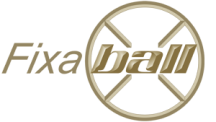
Technicals: Hexagon Socket Screws and Bolts
Share
Allen Hexagon Socket Screw/ Bolt Overview
‘Socket,’ is characterised by hexagon shaped indentation found on the top of the fasteners’ head. Here, you can use a hexagon key (or allen key) to tighten and loosen the fastener.
The socket fastener range became widely used from around 1945. During the 1970’s socket screws came into mass production in Europe soon followed by Japan and currently Taiwan and India are the main suppliers to the world.
An allen socket, cap head screw is best used in engineering applications where you are joining components under heat and or high compression, tension, torque or shearing stress. For example, they are used to fasten automotive or machinery parts together. Allen socket, cap head screw/ bolts are designed to be used as a temporary fastener where components need maintenance or need to be replaced due to functional wear.
A socket screw can come as a screw or bolt. A 'bolt' is the term used to describe a fastener that is partially threaded with a part plain, unthreaded shank under the head.This plain shoulder is not threaded as a thread only needs to be inserted as long as it is wide to acheive maximum torque. A bolt is most commonly used through a clearance hole and fastened with a nut and washer to secure components together. On a bolt (generally) the thread stays the same length as the fastener gets longer and the maximum length of thread is equal to 2.5 times the diameter (or thereabouts). A screw is fully threaded and is most commonly used to turn into a pre threaded component.
Socket Screw Bolt Head Types Available at Fixaball
Socket Button Screws, also known as Round Screws or Dome Screws, feature a widely used hexagon/ hex/ allen key drive. Socket Button Head Screws are low-profile, and used for safety and aesthetic applications with their rounded/ mushroom head, featuring no sharp or pointed edges.
Socket Cylindrical Cap Screw Bolts
Socket cap screw bolts were first designed around 100 years ago by companies like Allen, Unbrako and Holo-krome brand names. What Hoover did for vacuum cleaners, Allen did for cap screws and their name was and is widely used and accepted regardless of the brand. The head of a socket cap is cylindrical with the Allen/ hexagon indentation in the middle of the top. Often, the cylindrical face is knurled (grip) to make it easier to thumb/ finger tighten and loosen.
Socket head cap screws with an internal hexagon drive are used in a lot of applications where tensile strength and space is needed. Socket caps can be used more frequently as their heads are comparitively smaller than hexagon heads. The internal hexagon is tightened and loosened with a hexagon/ allen wrenching ‘key’. The socket cap is driven into a counterbored hole, deep enough for the head to be flush or below the surface. The counterbore should give at least 1mm clearance for the head to turn.
Metric socket cap screws and bolts come in high tensile grades 8.8, 10.9 and 12.9 for UK, European and American markets. They are more readily available in 12.9 grade. A2/ 304-70 and A4/ 316-80 stainless steel are also commonly available as a cylindrical head socket cap screw. All socket cap screws over M5 diameter are required to have a manufacturer's and material stamp. American Imperial, Inch, UNC/ UNF socket cap screws need to meet ANSI B18.3 standards and have a hardness of RC38/43 which is within the same range of a European Metric 12.9 socket cap screw. English, Inch, BSF/BSW socket cap screws are manufactured to specification BS2470 and have a similar hardness as Metric 12.9 with a range of RC39/43.
Socket Countersunk Screw Bolts
Low Cap, refers to a shorter head and is available for those applications that require a shallow profile either in tight installations or visual discretion. They are not available in UNC or UNF but metric screws are popular in DIN7984 standard and are also available to DIN6912. Over M10 the head heights are slightly taller on DIN6912's.
Socket Set Screw (Grub) Screws
A socket set screw (grub) is a type of screw generally used to secure an object within or against another object, normally not using a nut. The most common examples are securing a pulley or gear to a shaft. Socket set screws are usually headless (also called blind), meaning that the screw is fully threaded and has no head projecting past the major diameter of the screw thread. If a set screw has a head, the thread will extend all the way to the head (whereas a bolt might have an unthreaded shank between the head and thread). A grub screw (blind set screw), is almost always driven with an internal-wrenching drive, such as a hex socket (Allen), star (Torx), square socket (Robertson), or slot. The set screw passes through a threaded hole in the outer object and is tightened against the inner object to prevent it from moving relative to the outer object. It exerts compressional or clamping force through the bottom tip that projects through the hole.
Shoulder Socket Cap Screws are high tensile (12.9) and hardness strength fasteners with an internal hexagon or allen key drive. They are blackened alloy steel, hardness 38 HRC, tensile strength 1200 N/mm². The shoulder is a cylindrical unthreaded area before the thread, allowing for rotation of parts and other 'mechanical' application.






